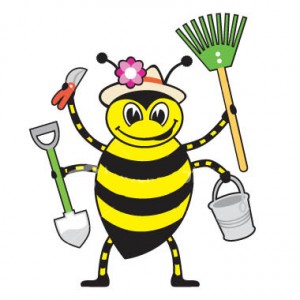Working Bees: Keeping Your Volunteers Safe on the Day
October 23, 2016 - 5 minutes read A lot can be achieved by getting a bunch of willing volunteers together to work on some much-needed tasks around a church property. It’s important though if you intend running a working bee to be aware of the risks associated with them, and to manage them properly through insurance cover, good planning, and risk control procedures. Below we have drawn up a list covering many of the things you need to consider when planning a working bee.
A lot can be achieved by getting a bunch of willing volunteers together to work on some much-needed tasks around a church property. It’s important though if you intend running a working bee to be aware of the risks associated with them, and to manage them properly through insurance cover, good planning, and risk control procedures. Below we have drawn up a list covering many of the things you need to consider when planning a working bee.
Insurance – types of cover you will need
- Personal Accident (Volunteers) – provides a degree of financial protection (such as compensation of non-Medicare medical costs) for volunteers engaged in church-authorised voluntary work.
- Public liability – financial protection in case of damage claims brought due to negligence.
For more information on these or other insurance solutions for churches, download the ‘Summary of Insurance‘ or contact the CCI office.
A plan for the day
What this might look like:
- Task list – weeding, mowing, tree planting, fence mending, yard clean-ups, painting, cleaning, picking-up rubbish and so on.
- Schedule – ideally you should know who will be coming on the day and at what time, as well as what their skill levels are, so you can draw up a task schedule in advance. This is preferable to just asking a crowd to turn up and then trying to allocate suitable tasks!
Make sure to allocate break times in the schedule as well, and to provide refreshments if it’s going to be a long day. - Tools required – in many cases working bee participants bring their own tools, such as wheel barrows, mowers, shears, paint brushes, mops, buckets, hammers, chainsaws etc. In any case if any people are going to be working with power tools or strong chemicals, it’s important they bring or are provided with any necessary protective equipment.
- Plan B – if there are outdoor tasks to be done, you might need to think about what will be done if the weather turns bad, such as rescheduling or changing the task list to indoor tasks only. (Fortunately with today’s quick electronic communications it’s usually a bit easier to contact people prior to the event than in the past!).
- Rules on what to bring – if volunteers are going to be working outdoors, ask them to wear hats, sunglasses and sunscreen for sun protection, and to bring their own drinking water supply. It’s also important that they wear closed shoes – no thongs or sandals! Other items to bring (or to provide) may include goggles, gardening gloves, rubber gloves, and ear muffs.
Managing the risks
Things can (and occasionally do) go wrong at working bees. Safety is always the top priority. Churches have an obligation to provide safe environments and working-systems, while volunteers are obliged to comply with health and safety rules and procedures. Here are a few matters to pay attention to.
- Health and safety officer – appointment of a suitably qualified person to be in charge of health and safety for the day.
- Risk assessment – this involves identifying hazards that may cause injury or harm and taking steps to remove them or reduce their impact.
- First Aid – ensure you have First Aid officers attending, and also have a first aid kit and emergency contacts list on hand.
- Matching of people to tasks – for instance, ensuring volunteers are physically fit and have the necessary skills to perform their tasks. If any trade work is to be done, it should only be handled by suitably qualified people.
- Working at heights – if this is going to take place, make sure any ladders used are in good condition, and that safety is attended to (such as anchor points, harnessing and safe use).
- Food safety – if you are going to be providing food on the day, you need to comply with food safety regulations.
Please also refer to the links below for more detail on many of the topics brought up in this post.
Links:
Work safety matters for volunteers
Healthy work environments
Harmonisation of health and safety legislation
Ladder safety tips
Food safety tips
Risk management basics
First Aid matters
Written by Tess Oliver
Tags: food safety, health & safety, volunteers
Recent Comments